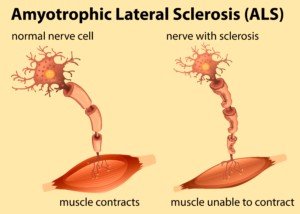
Diagnosing ALS can take a long time, with misdiagnoses occurring too often.
The diagnosis of ALS “relies heavily on the physician’s clinical acuity,” says Professor Philip Van Damme from VIB-KU Leuven, UZ Leuven.
Researches have now shown that measuring neurofilaments can speed up the process of diagnosing ALS.
“The average time between the first symptoms and diagnosis is approximately one year,” says Prof. Van Damme in the report. “Better tests are needed for a faster ALS diagnosis.”
This is where neurofilaments come in.
In the cytoskeleton are neurofilaments, which are structural proteins. Motor neurons contain high concentrations of neurofilaments.
The lumbar (lower back region) fluid in people with ALS contains a higher concentration of neurofilaments. This may be due to deteriorated motor neurons releasing the neurofilaments.
Prof. Van Damme et al investigated this phenomenon.
There is a certain type of neurofilament called phosphorylated neurofilament heavy, or pNfH.
In the lumbar fluid of those with ALS, there’s a particularly high concentration of pNfH.
This high concentration of pNfH doesn’t even exist as much in diseases that mimic ALS.
The report states that when the high amount of pNfH is shown, the test for this “meets all the requirements for use as a reliable diagnostic test.”
The caveat is that the test “requires an epidural because we can still only reliably measure the neurofilaments in the lumbar fluid.”
Another thing that the researchers found is that there’s a correlation between extent of motor neuron loss and degree of neurofilament increase.
Hopefully these findings will speed up the diagnosis of ALS, and more research into that is needed.









































